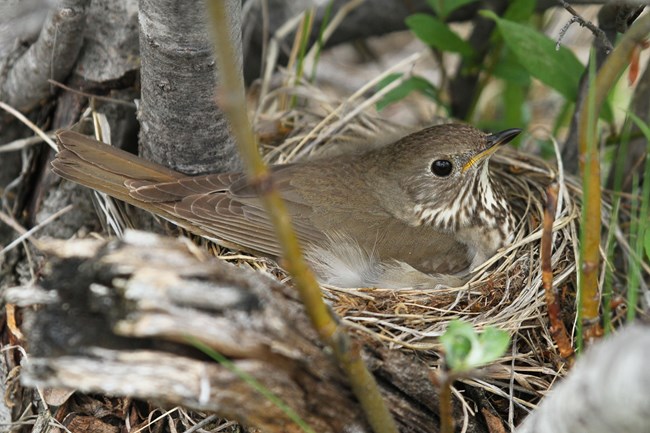
Jared Hughey
Landbirds (tree-dwelling birds, perching birds or songbirds, raptors, and ground-feeding birds) includes many species that spend the majority of their lives in terrestrial environments. Songbirds comprise more than 50% of the bird species in Arctic parklands, are easily detected, and are well studied across North America using standardized methods. One of the most visible changes related to a warming climate in Alaska is the rapid expansion of woody vegetation (e.g., erect shrubs) across open landscapes and into higher elevations. Landbird species select breeding and foraging sites in particular habitat types and structures, and by virtue of their high mobility, have the capacity for rapidly adapting to changes in vegetation by modifying their breeding distributions. Thus, monitoring of the montane-breeding bird assemblage may be useful in indicating ecological responses to climate change in the Arctic. While the migratory bird community in the Brooks Range is primarily composed of species that winter at North American mid-latitudes and a few that winter in the neotropics, breeding populations of several palearctic migrants with restricted ranges in North America are also present, including: Eastern Yellow Wagtail (Motacilla tschutschensis), Arctic Warbler (Phylloscopus borealis kennicotti), Northern Wheatear (Oenanthe oenanthe), and Bluethroat (Luscinia svecica).
We monitor landbirds in Gates of the Arctic National Park & Preserve and Noatak National Preserve to document:
- Temporal trends in abundance and occupancy of montane-nesting birds.
- Changes in spatial distribution through time.
Contact: Jeremy Mizel
Songbirds in Arctic and Subarctic Alaska
Learn more
Last updated: April 30, 2025
